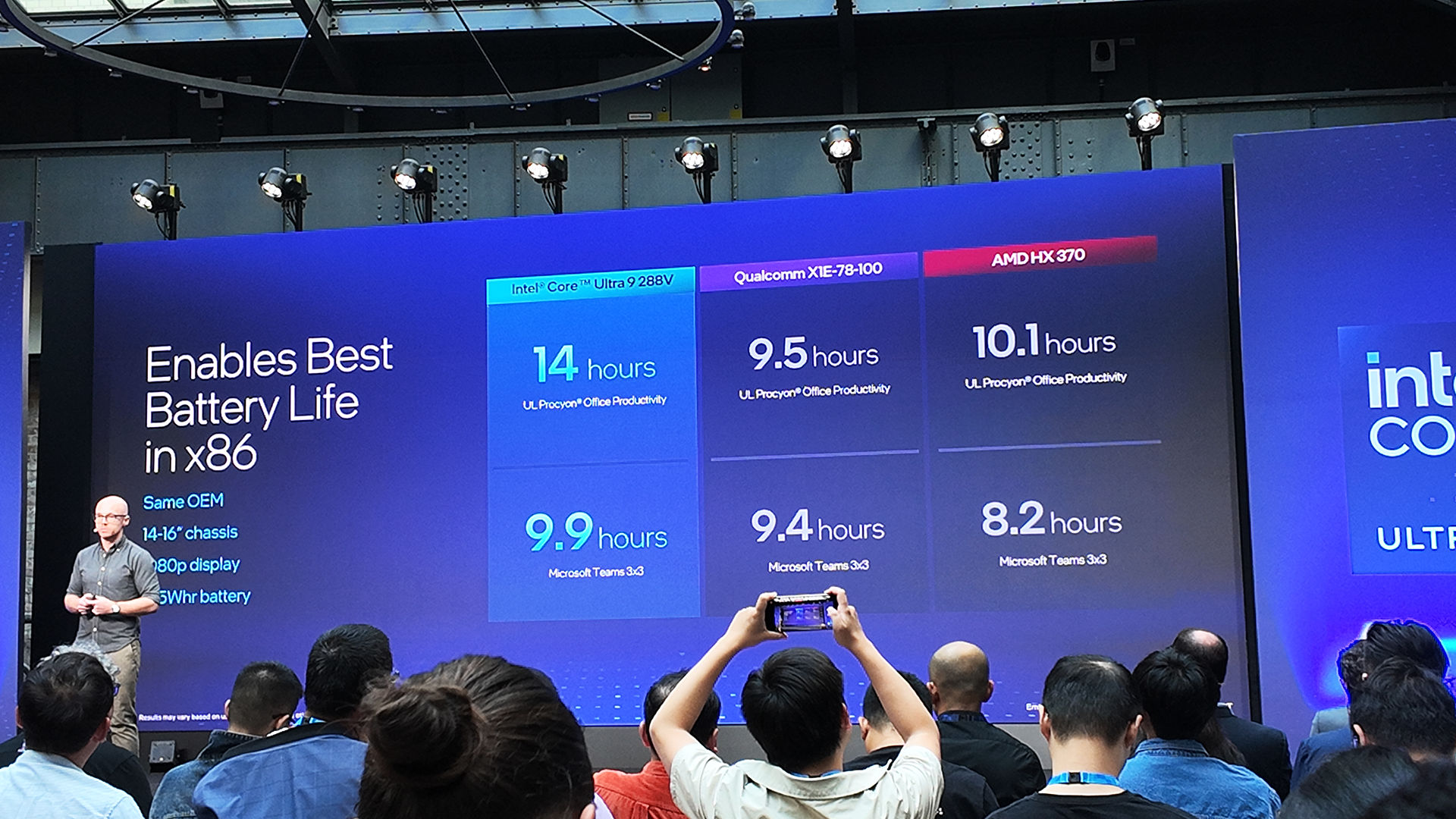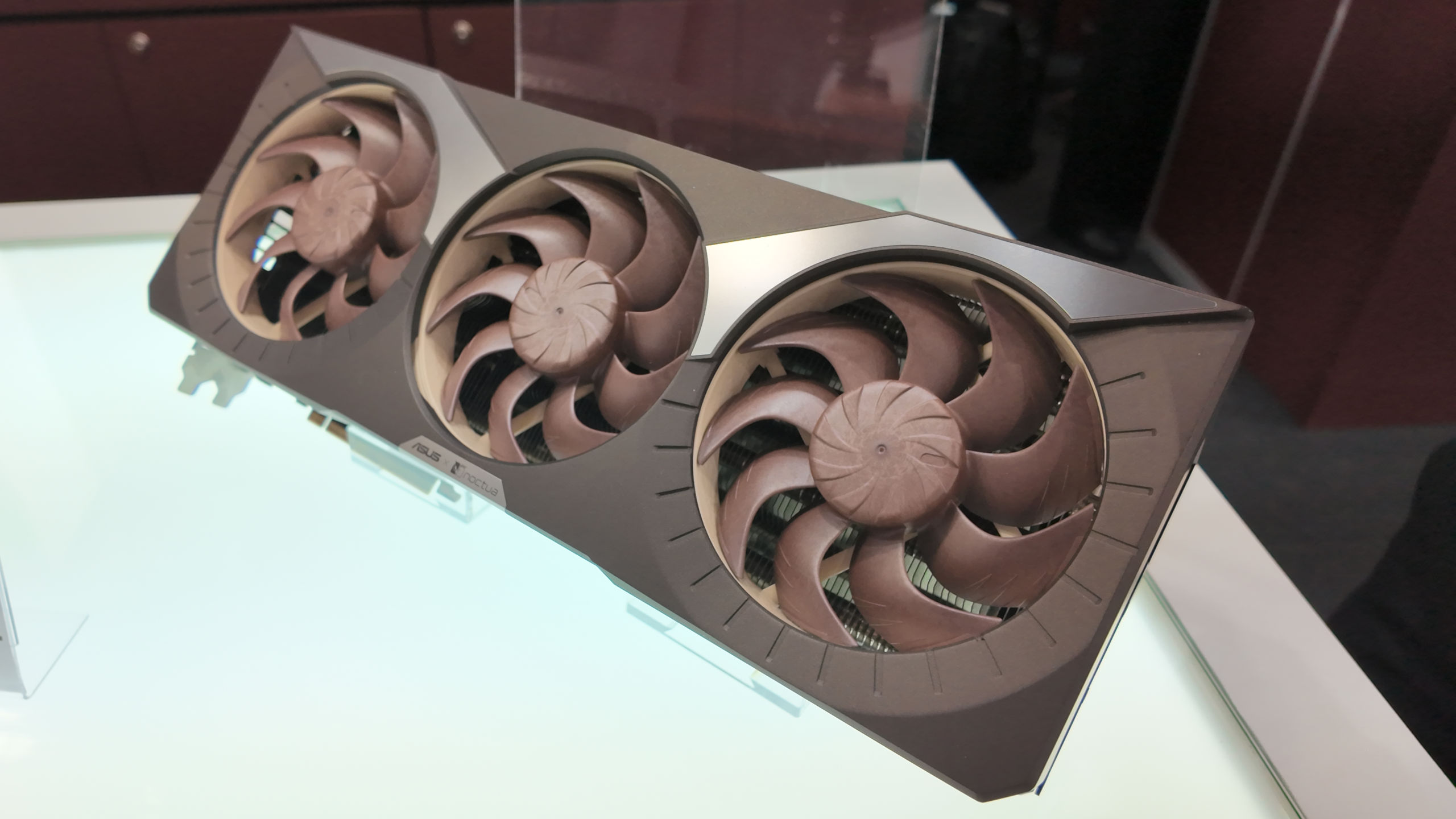
A desktop CPU with lower power consumption than the last would really break a trend for Intel.
Intel has been playing its cards close to its chest when it comes to the battery life on its latest generation of mobile processors, Lunar Lake. Perhaps it’s because Qualcomm had come out with a new ARM-based processor lineup promising big battery life right around the time of Intel’s reveal, or maybe—no, that’s probably it. Thankfully, at the Lunar Lake launch event, the company finally offered its own estimations for how long Lunar Lake will last away from the outlet.
According to Intel’s own figures, Lunar Lake will nail around 14 hours of battery life in UL’s Procyon Office Productivity test. Compare that to around 10 on AMD’s latest Ryzen AI 9 HX 370 and 9.5 on Qualcomm’s X1E-78-100, both inside laptops with similar specs and battery capacities (70-78 Whr), and Intel appears to be onto a winner.
That battery life will, of course, vary, depending on which applications you use. Intel will have been sure to pick some favourable benchmarks for battery to show off here, too. Qualcomm has boasted double digit battery life sometimes and AMD has a decent track record in the battery department, for the record.
Intel published another slide claiming over 20 hours of battery life from the Core Ultra 7 268V, though the unspecified “OEM machine” it used to compare with Qualcomm, at 18.4 hours, is wrapped in a little more mystery. For one both Intel and Qualcomm systems had smaller batteries than those noted above, and yet much longer battery life.
Intel is claiming that its new Lion Cove and Skymont core architectures (P- and E-core, respectively) are built with power-saving in mind. For one, these Lunar Lake chips ditch Hyper-Threading altogether to save transistors, and therefore power.
(Image credit: Intel)
(Image credit: Intel)
This battery life claim did at least offer a sneaky opportunity for Intel’s Robert Hallock to reiterate a point he’s made a few times before: “It’s not the instruction set that determines the efficiency.”
That’s aimed more at ARM-based processors than its competitor’s x86 chips. Intel has taken a good few pot shots at Qualcomm’s X Elite chips during its Berlin launch event for Lunar Lake, namely calling out times when the Qualcomm chip couldn’t produce comparable results for various benchmarks.
While Intel is also going to dig those incompatible benchmarks out to make a point, there is something convincing in its bid of a new processor that’s extremely efficient and doesn’t require a reworking of the entire software stack in order to run. ARM-based chips often do, though that process is already in motion today.
Whether Intel’s claims of battery life will survive into the laptops we actually see on the shelves, well, we’ll see about that. These are certainly going to be ‘best case scenario’ sorta figures, and some laptops are sure to be a little less capable.
With chips coming with TDPs anywhere between 33 watts down to nine watts, there’s going to be plenty of variation in performance and battery life, depending on how an OEM sets up each chip in their device. For example, Intel said a 9 W chip could even go fanless, if someone was keen to build such a thing. You can forget about gaming on that, however.
The main thing I’m excited to hear about is whether this battery life, combined with Xe2’s claimed GPU performance improvements, will translate into an impressive handheld gaming PC. If Intel manages to overcome still slightly wobbly drivers, game compatibility, and upgrade the overall package, it could be a mean machine with increased battery life. A lot of ifs there, though.
At least we know of one Lunar Lake handheld coming our way. That’s MSI’s new Claw 8.
The important thing for us gamers is that Intel intends to use these power savings in future CPU generations, including in “other segments”. It’s no secret that Arrow Lake, the next desktop CPU generation poised for launch very soon, is predicted to dramatically lower power consumption, which means we should see these savings make it to desktop sooner rather than later.







